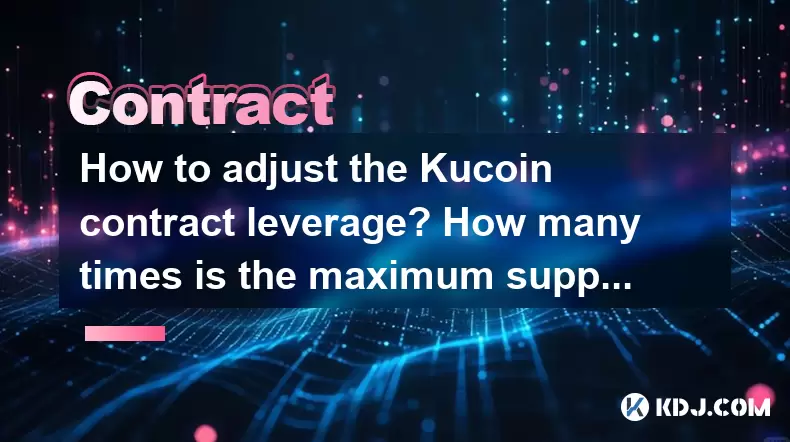-
 Bitcoin
Bitcoin $115200
-2.68% -
 Ethereum
Ethereum $3601
-5.16% -
 XRP
XRP $3.035
-2.96% -
 Tether USDt
Tether USDt $0.9997
-0.04% -
 BNB
BNB $764.5
-5.43% -
 Solana
Solana $168.1
-5.92% -
 USDC
USDC $0.9998
-0.02% -
 Dogecoin
Dogecoin $0.2090
-4.80% -
 TRON
TRON $0.3272
-0.49% -
 Cardano
Cardano $0.7306
-5.00% -
 Hyperliquid
Hyperliquid $39.16
-12.22% -
 Stellar
Stellar $0.3967
-4.96% -
 Sui
Sui $3.566
-5.95% -
 Chainlink
Chainlink $16.55
-6.57% -
 Bitcoin Cash
Bitcoin Cash $552.3
-3.90% -
 Hedera
Hedera $0.2516
-4.69% -
 Avalanche
Avalanche $21.99
-5.75% -
 Toncoin
Toncoin $3.621
-0.28% -
 Ethena USDe
Ethena USDe $1.000
-0.03% -
 UNUS SED LEO
UNUS SED LEO $8.951
0.02% -
 Litecoin
Litecoin $105.9
-3.59% -
 Shiba Inu
Shiba Inu $0.00001232
-5.00% -
 Polkadot
Polkadot $3.640
-5.55% -
 Uniswap
Uniswap $9.048
-7.03% -
 Monero
Monero $301.8
-1.51% -
 Dai
Dai $0.9999
-0.01% -
 Bitget Token
Bitget Token $4.334
-3.66% -
 Pepe
Pepe $0.00001064
-6.17% -
 Cronos
Cronos $0.1367
-5.78% -
 Aave
Aave $259.2
-4.59%
How to adjust the Kucoin contract leverage? How many times is the maximum supported?
Kucoin offers up to 100x leverage on futures contracts, allowing traders to amplify positions but requiring careful risk management due to potential high losses.
May 18, 2025 at 02:22 am

Introduction to Kucoin Contract Leverage
Kucoin, one of the leading cryptocurrency exchanges, offers futures trading through its contract platform. Leverage is a crucial feature that allows traders to amplify their trading positions by borrowing funds from the exchange. In this article, we will delve into how to adjust the leverage on Kucoin contracts and explore the maximum leverage supported by the platform.
Understanding Leverage in Kucoin Contracts
Leverage in the context of Kucoin contracts refers to the ability to control a large position with a relatively small amount of capital. It is expressed as a ratio, such as 1:10, which means that for every dollar of your own money, you can control up to ten dollars worth of the contract. This amplifies both potential profits and losses, making it a powerful but risky tool.
Accessing the Kucoin Futures Trading Interface
To adjust the leverage on Kucoin contracts, you first need to access the futures trading interface. Here are the steps to do so:
- Log into your Kucoin account.
- Navigate to the 'Futures' section from the main menu at the top of the page.
- Select the specific futures contract you wish to trade. Kucoin offers various contracts, including Bitcoin (BTC) and Ethereum (ETH) futures.
Adjusting Leverage on Kucoin Contracts
Once you are in the futures trading interface, adjusting the leverage is straightforward. Follow these steps:
- Find the leverage adjustment tool. This is usually located on the trading interface, often near the order entry fields.
- Click on the leverage display to open the leverage adjustment window.
- Select your desired leverage level from the available options. The leverage can be set anywhere between 1x and the maximum supported leverage, which we will discuss in the next section.
- Confirm your selection. Once you choose your leverage, the system will update your trading position accordingly.
Maximum Leverage Supported on Kucoin
Kucoin supports a maximum leverage of up to 100x on certain futures contracts. However, the availability of this maximum leverage can vary depending on the specific contract and market conditions. It's important to check the details of each contract to understand the maximum leverage you can use.
For example, while Bitcoin (BTC) futures might offer up to 100x leverage, other contracts like Ethereum (ETH) might have a different maximum leverage limit. Always verify the leverage limits for the contract you are interested in before trading.
Factors to Consider When Adjusting Leverage
When adjusting leverage on Kucoin contracts, several factors should be taken into account:
- Risk Management: Higher leverage increases potential profits but also increases potential losses. Always use leverage cautiously and have a risk management strategy in place.
- Market Volatility: In highly volatile markets, using high leverage can lead to significant losses if the market moves against your position.
- Margin Requirements: Higher leverage requires less margin but also increases the risk of liquidation. Ensure you understand the margin requirements for the leverage you choose.
- Trading Strategy: Your trading strategy should align with the leverage you use. For example, long-term traders might prefer lower leverage, while short-term traders might opt for higher leverage.
Practical Example of Adjusting Leverage
Let's walk through a practical example of adjusting leverage on a Kucoin BTC futures contract:
- Log into Kucoin and navigate to the 'Futures' section.
- Select the BTC futures contract.
- Locate the leverage adjustment tool on the trading interface.
- Click on the current leverage display to open the leverage adjustment window.
- Choose 20x leverage from the available options.
- Confirm the selection. Your trading position will now be adjusted to 20x leverage.
Monitoring and Adjusting Leverage During Trading
It's essential to monitor and adjust your leverage during trading sessions. Here are some tips:
- Regularly check your position's performance. If the market moves against you, consider reducing leverage to minimize potential losses.
- Adjust leverage based on market conditions. If volatility increases, you might want to lower your leverage to protect your position.
- Use stop-loss orders. These can help manage risk by automatically closing your position if it reaches a certain loss threshold.
Frequently Asked Questions
Q: Can I change the leverage on an existing position?
A: Yes, you can adjust the leverage on an existing position. However, be aware that changing leverage might require additional margin or could lead to immediate liquidation if the new leverage level is not supported by your current margin.
Q: Does Kucoin charge fees for adjusting leverage?
A: Kucoin does not charge a specific fee for adjusting leverage. However, trading fees apply to opening and closing positions, regardless of the leverage used.
Q: What happens if I cannot meet the margin requirements after adjusting leverage?
A: If you cannot meet the margin requirements after adjusting leverage, your position might be liquidated to cover the shortfall. Always ensure you have sufficient margin before increasing leverage.
Q: Can I use different leverage levels for different contracts on Kucoin?
A: Yes, you can set different leverage levels for different contracts on Kucoin. Each contract can have its own leverage setting, allowing you to tailor your trading strategy to each market.
Disclaimer:info@kdj.com
The information provided is not trading advice. kdj.com does not assume any responsibility for any investments made based on the information provided in this article. Cryptocurrencies are highly volatile and it is highly recommended that you invest with caution after thorough research!
If you believe that the content used on this website infringes your copyright, please contact us immediately (info@kdj.com) and we will delete it promptly.
- Cardano Price, Pi Network, and Crypto Presales: What's the Buzz?
- 2025-08-02 08:50:12
- XRP Fund Success: Teucrium CEO Reveals Trillions on the Horizon
- 2025-08-02 09:10:12
- Challenge Coins: More Than Just Collectibles – A Military Tradition
- 2025-08-02 08:30:12
- Under the Radar: Hunting for 100x Crypto Gems in a Pi Network World
- 2025-08-02 08:30:12
- Bitcoin, Solana, and Altcoin Season: What's Hot and What's Not?
- 2025-08-02 07:10:12
- Toncoin, Rollblock, and the Token Offering Landscape: A New York Minute
- 2025-08-02 07:10:12
Related knowledge

Why is my Bitstamp futures position being liquidated?
Jul 23,2025 at 11:08am
Understanding Futures Liquidation on BitstampFutures trading on Bitstamp involves borrowing funds to open leveraged positions, which amplifies both po...

How to report Bitstamp futures for taxes?
Jul 30,2025 at 08:35am
Understanding Bitstamp Futures and Taxable EventsWhen trading Bitstamp futures, it’s essential to recognize that these financial instruments are treat...

Does Bitstamp offer inverse contracts?
Jul 23,2025 at 01:28pm
Understanding Inverse Contracts in Cryptocurrency TradingIn the realm of cryptocurrency derivatives, inverse contracts are a specific type of futures ...

What is the difference between futures and perpetuals on Bitstamp?
Jul 27,2025 at 05:08am
Understanding Futures Contracts on BitstampFutures contracts on Bitstamp are financial derivatives that allow traders to speculate on the future price...

How to find your Bitstamp futures trade history?
Jul 23,2025 at 08:07am
Understanding Bitstamp and Futures Trading AvailabilityAs of the current state of Bitstamp’s service offerings, it is critical to clarify that Bitstam...

Can I use a trailing stop on Bitstamp futures?
Jul 23,2025 at 01:42pm
Understanding Trailing Stops in Cryptocurrency TradingA trailing stop is a dynamic type of stop-loss order that adjusts automatically as the price of ...

Why is my Bitstamp futures position being liquidated?
Jul 23,2025 at 11:08am
Understanding Futures Liquidation on BitstampFutures trading on Bitstamp involves borrowing funds to open leveraged positions, which amplifies both po...

How to report Bitstamp futures for taxes?
Jul 30,2025 at 08:35am
Understanding Bitstamp Futures and Taxable EventsWhen trading Bitstamp futures, it’s essential to recognize that these financial instruments are treat...

Does Bitstamp offer inverse contracts?
Jul 23,2025 at 01:28pm
Understanding Inverse Contracts in Cryptocurrency TradingIn the realm of cryptocurrency derivatives, inverse contracts are a specific type of futures ...

What is the difference between futures and perpetuals on Bitstamp?
Jul 27,2025 at 05:08am
Understanding Futures Contracts on BitstampFutures contracts on Bitstamp are financial derivatives that allow traders to speculate on the future price...

How to find your Bitstamp futures trade history?
Jul 23,2025 at 08:07am
Understanding Bitstamp and Futures Trading AvailabilityAs of the current state of Bitstamp’s service offerings, it is critical to clarify that Bitstam...

Can I use a trailing stop on Bitstamp futures?
Jul 23,2025 at 01:42pm
Understanding Trailing Stops in Cryptocurrency TradingA trailing stop is a dynamic type of stop-loss order that adjusts automatically as the price of ...
See all articles

























































































